Share via:
Chicken Feet Health: Don’t Take it for Granted
- Summary
- Deep Dive
- FAQs

-
-
-
Summary Chicken Feet Health
Most new owners don't know a lot about chicken feet health, but it's a topic that deserves attention. Common issues include bumblefoot (a bacterial infection caused by injuries), footpad dermatitis (irritation from wet or dirty conditions), scaly leg mites (parasites under leg scales), overgrown toenails or spurs, frostbite, and toe injuries. These problems can cause pain, mobility issues, and infection if untreated. Preventative measures to ensure chicken feet health include maintaining clean, dry coops, providing smooth perches, trimming nails or spurs when needed, and protecting chickens from extreme cold. Regularly inspecting chickens' feet and acting quickly on any problems are essential for ensuring their health. Healthy feet allow chickens to thrive, lay eggs, and live stress-free lives.
Keep reading for a deeper dive and FAQs.
Chicken Feet Health
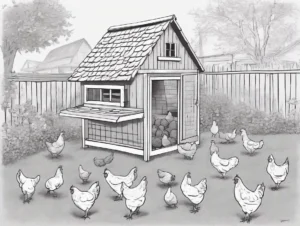
The feet might seem like a strange part of a chicken to think about, but they’re incredibly important! For chickens, their feet do a lot of work every day. They walk, scratch at the ground for food, perch on branches or bars, and help them keep their balance.
It’s important to be aware of common chicken health issues, and pay special attention to their feet. If something goes wrong with a chicken’s feet, it can affect the bird’s health, ability to move, and overall quality of life. Let’s take a closer look at common problems that can affect chicken feet health and how they can be treated or prevented.
Bumblefoot
Bumblefoot is one of the most well-known foot problems in chickens. It happens when bacteria enter a wound or crack in the chicken’s foot. These wounds can occur from sharp objects like rocks, splinters, or rough perches. The infection causes a hard lump or abscess to form, usually on the bottom of the foot.
Bumblefoot can make it painful for the chicken to walk, and if it’s not treated, the infection can spread to other parts of the body. Early signs include swelling, redness, or a chicken limping. In severe cases, you might see a large scab or pus-filled area.
Treatment and Prevention:
To treat bumblefoot, the infected area often needs to be cleaned, (hopefully your first aid kit for chickens is fully stocked up) and sometimes a vet might recommend surgery to remove the infection. To prevent it, make sure chickens have smooth perches, clean bedding, and an area free of sharp objects. Checking their feet regularly for small injuries can help catch problems early.
Footpad Dermatitis
This condition occurs when the bottom of a chicken’s foot becomes irritated due to wet, dirty, or rough surfaces. When chickens spend too much time standing in damp or soiled bedding, the skin on their feet can break down and get sore. Over time, this can cause ulcers or swelling.
Treatment and Prevention:
The best way to prevent footpad dermatitis is to keep the chicken coop clean and dry. Regularly replacing bedding and ensuring good drainage in the coop can make a big difference. If a chicken develops sores, they might need an antibacterial ointment or other care from a veterinarian.
Scaly Leg Mites
Scaly leg mites are tiny parasites that burrow under the scales on a chicken’s legs and feet. This can cause the scales to lift, giving the legs and feet a rough, scaly appearance. If left untreated, the infestation can lead to severe pain and deformity of the feet.
Treatment and Prevention:
To treat scaly leg mites, you can soak the chicken’s legs in warm, soapy water to loosen the scales. Applying petroleum jelly or special mite treatments can smother the mites. Keeping the coop clean and treating all chickens in a flock can help stop mites from spreading.
Overgrown Toenails or Spurs
Just like humans need to cut their fingernails, chickens sometimes need help keeping their toenails and spurs at the right length. If their nails get too long, they can curl, break, or make it hard for the chicken to walk. Spurs, which are sharp growths found on the legs of roosters, can also grow too long and cause injuries to other chickens.
Treatment and Prevention:
You can trim a chicken’s nails or spurs with clippers made for birds. Be careful not to cut too close to the quick, which is the living part of the nail. Regularly checking your flock’s feet can help you catch overgrown nails before they become a problem.
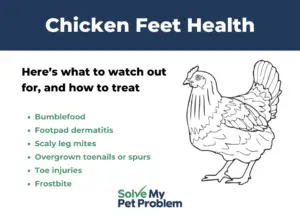
Frostbite
Dealing with backyard chickens in the winter add additional things to monitor. In cold weather, chickens are at risk of frostbite, especially on their feet and combs. Frostbite happens when the skin and tissue freeze due to exposure to very low temperatures. Chickens with frostbite may have discolored feet (white, blue, or black), swelling, or tissue that feels cold and hard. Severe frostbite can lead to permanent damage or loss of toes.
Treatment and Prevention:
Protect chickens from frostbite by ensuring their coop is well-insulated and free of drafts. Adding extra bedding during the winter and keeping waterers from spilling can help keep their feet dry and warm. If frostbite occurs, it’s important not to rub the frozen area, as this can cause more damage. Warm the area gently, and consult a vet for severe cases.
Toe Injuries
Chickens can sometimes injure their toes while scratching, fighting, or if something heavy falls on their feet. Broken or dislocated toes can cause pain and make it hard for a chicken to walk. Cuts and scrapes on their toes are also common and can become infected if not treated.
Treatment and Prevention:
For minor injuries, clean the wound and apply an antibacterial ointment. For broken toes, a vet might need to splint the toe to help it heal. Keeping the coop free of hazards and sharp objects can prevent many injuries.
Why Foot Health Matters
Healthy feet are essential for chickens to live happy, active lives. Chickens use their feet for almost everything, from foraging for food to roosting at night. When a chicken has foot problems, it might stop eating or drinking, avoid moving around, or become stressed. This can affect their overall health and even the health of the entire flock.
For people raising chickens, whether for eggs, meat, or as pets, keeping an eye on foot health is part of good animal care. A chicken with healthy feet is more likely to lay eggs regularly, grow strong, and stay disease-free.
How to Keep Chicken Feet Healthy
Although it’s not a guarantee, there are many things you can do to promote chicken feet health.
- Clean Living Spaces: Regularly clean the coop and replace bedding to prevent wet or dirty conditions.
- Provide Safe Perches: Make sure perches are smooth and comfortable for chickens to rest on.
- Check Feet Regularly: Look at your chickens’ feet at least once a week for any signs of injury, swelling, or unusual changes.
- Feed a Balanced Diet: Healthy chickens are less likely to develop infections or injuries, so make sure they’re eating the right foods.
- Respond Quickly to Problems: If you notice any issues with your chickens’ feet, take action right away to prevent small problems from becoming serious.
By understanding common chicken foot problems and taking steps to prevent them, you can help your chickens stay happy and healthy. After all, healthy feet mean happy chickens—and that’s something every chicken keeper wants!
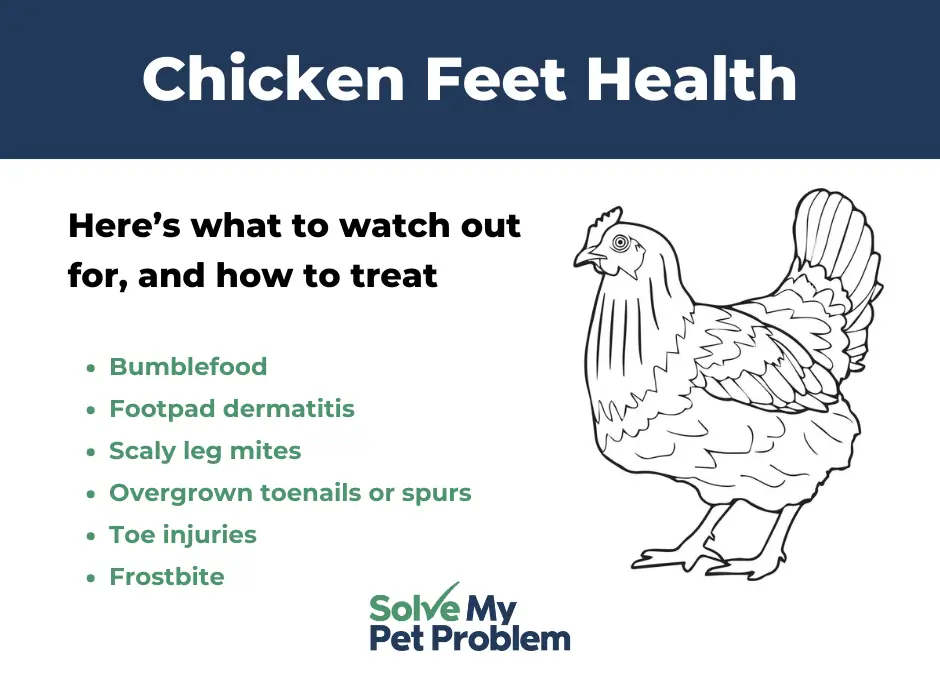

-
-
-
Frequently Asked Questions
Chicken Feet Health Problems FAQs
Why are chicken feet important for their health?
Chicken feet are vital for a chicken’s movement, balance, and overall health. They help chickens walk, scratch for food, perch, and maintain stability. Healthy feet are essential for their mobility and quality of life.
What are common foot problems in chickens?
Common foot issues include:
- Bumblefoot: A bacterial infection caused by injuries
- Footpad Dermatitis: Irritation from wet or dirty surfaces
- Scaly Leg Mites: Parasites under leg scales
- Overgrown Toenails or Spurs: Nails or spurs that are too long
- Frostbite: Damage from extreme cold
- Toe Injuries: Broken or injured toes from accidents or fights
What is bumblefoot, and how can I treat it?
When researching chicken feet health problems, Bumblefoot comes up a lot. This occurs when bacteria enter a wound or crack on the foot, causing an abscess. It can make walking painful. To treat it, clean the infected area, and in severe cases, consult a vet for surgery. Prevent bumblefoot by ensuring smooth perches and clean bedding.
How can footpad dermatitis be prevented?
Footpad dermatitis results from wet or dirty conditions that irritate the bottom of the feet. Prevent it by maintaining a clean, dry coop and replacing bedding regularly. Ensure proper drainage in the coop to avoid moisture buildup.
What are scaly leg mites, and how do I treat them?
Scaly leg mites are tiny parasites that burrow under the scales on a chicken’s legs, causing rough, scaly skin. Treatment includes soaking the legs in warm, soapy water and applying petroleum jelly or mite treatments. Ensure the coop is clean and treat all chickens in the flock.
How do I handle overgrown toenails or spurs?
Overgrown toenails or spurs can cause discomfort and mobility issues. Trim the nails or spurs with clippers designed for birds, being careful not to cut too close to the quick. Regularly inspect your chickens’ feet to catch overgrown nails early.
How can I prevent frostbite in chickens?
Frostbite can occur in cold weather, particularly on the feet. To prevent it, ensure the coop is insulated and free of drafts, add extra bedding in winter, and keep waterers from spilling to maintain dry, warm conditions. If frostbite occurs, gently warm the affected area and consult a vet if necessary.
What should I do if my chicken injures its toe?
For minor toe injuries, clean the wound and apply antibacterial ointment. If a toe is broken or dislocated, a vet may need to splint it. To prevent injuries, keep the coop free of sharp objects and hazards.
How can I maintain healthy feet for my chickens?
- Clean the Coop: Regularly clean and replace bedding to avoid wet or dirty conditions.
- Safe Perches: Provide smooth and comfortable perches for resting.
- Regular Foot Checks: Inspect feet weekly for any issues like swelling, injury, or infection.
- Balanced Diet: A proper diet supports overall health and prevents infections.
- Quick Action: Address any foot issues promptly to prevent complications.
Why is foot health crucial for chickens? Healthy feet are essential for chickens to remain active and stress-free. Foot problems can affect their ability to eat, drink, move, and lay eggs. Proper foot care ensures your chickens are healthy, productive, and happy.
You Might Like
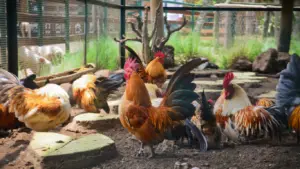
Chicken Coop Ventilation – How Much Do You Need?
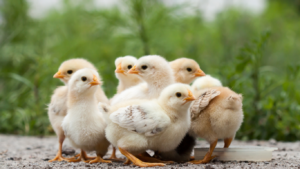
How to Build a Chicken Coop Door
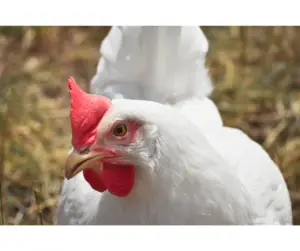
Green Diarrhea in Chickens: What It Means and How to Help
Share via:
